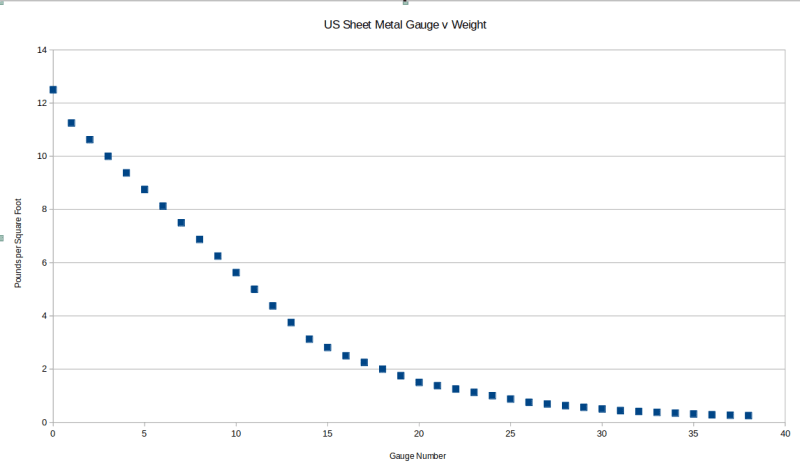JohnnyEnglish
Mechanical
I've been doing some research on stainless gauges (archaic) recently to try to find what the actual standard nominal thickness is for each one, and which ones are commonly available from suppliers. It has been quite frustrating and a little surprising/enlightening. Below is what I've found - they are in imperial (inch) measurements in North America. CR Coil typically goes to 7 Ga, which is why there is also a 3/16 which is where HRAP Coil / Plate begins and CR Coil ends (usually). Formal tolerances (not shown) are per ASTM A480 but these are generally much wider than a mill can actually produce.
Note there is no formal definition (as far as I'm aware) of these nominals in any standard. They are just known. Some of you might know these like the back of your hand; others may be be surprised for example to find that 11ga stainless is NOT 0.125in as is commonly reported on various websites (I was, a bit). Also, depending on what a distributor calls "nominal" may mean these values vary (maybe a little, maybe a lot).
The reason for this exercise is because I want to ensure designers and engineers can select material thicknesses with confidence, knowing that next week they won't be obsolete or at least difficult to source. As an example, we have often historically called for 0.03125 stainless. As you can see, although 1/32 feels like it should be a standard gauge, it isn't. But now that I know 0.0293 is "common" I can confidently design with 0.0293 ±0.003 (stress / mass) and always find a good selection of distributors for the stainless sheet.
Or so I thought, until I started looking at 321. Does anyone know if these nominals apply in any way to 321? It's standard thicknesses seem to be almost entirely different in the CR Coil range. This seems like madness, but I'm sure there is a good reason. 321 nominal thicknesses typically progress as follows : 0.016, 0.020, 0.025, 0.032, 0.035, 0.040 etc.
What gives? Any experience?
--- CR COIL ---
26 0.0178
24 0.0235
22 0.0293
20 0.0355
18 0.0480
16 0.0595
14 0.0751
12 0.1054
11 0.1200
10 0.1350
7 0.1874
--- HRAP COIL / PLATE ---
3/16 0.1875
1/4 0.2500
5/16 0.3125
3/8 0.3750
1/2 0.5000
Note there is no formal definition (as far as I'm aware) of these nominals in any standard. They are just known. Some of you might know these like the back of your hand; others may be be surprised for example to find that 11ga stainless is NOT 0.125in as is commonly reported on various websites (I was, a bit). Also, depending on what a distributor calls "nominal" may mean these values vary (maybe a little, maybe a lot).
The reason for this exercise is because I want to ensure designers and engineers can select material thicknesses with confidence, knowing that next week they won't be obsolete or at least difficult to source. As an example, we have often historically called for 0.03125 stainless. As you can see, although 1/32 feels like it should be a standard gauge, it isn't. But now that I know 0.0293 is "common" I can confidently design with 0.0293 ±0.003 (stress / mass) and always find a good selection of distributors for the stainless sheet.
Or so I thought, until I started looking at 321. Does anyone know if these nominals apply in any way to 321? It's standard thicknesses seem to be almost entirely different in the CR Coil range. This seems like madness, but I'm sure there is a good reason. 321 nominal thicknesses typically progress as follows : 0.016, 0.020, 0.025, 0.032, 0.035, 0.040 etc.
What gives? Any experience?
--- CR COIL ---
26 0.0178
24 0.0235
22 0.0293
20 0.0355
18 0.0480
16 0.0595
14 0.0751
12 0.1054
11 0.1200
10 0.1350
7 0.1874
--- HRAP COIL / PLATE ---
3/16 0.1875
1/4 0.2500
5/16 0.3125
3/8 0.3750
1/2 0.5000

